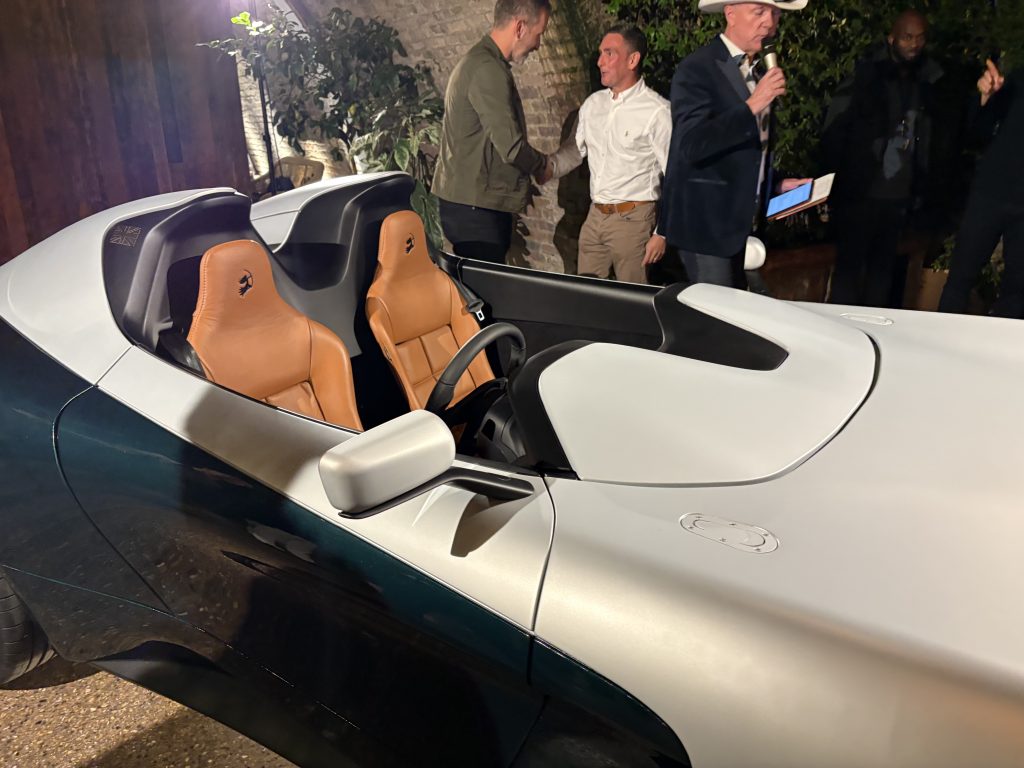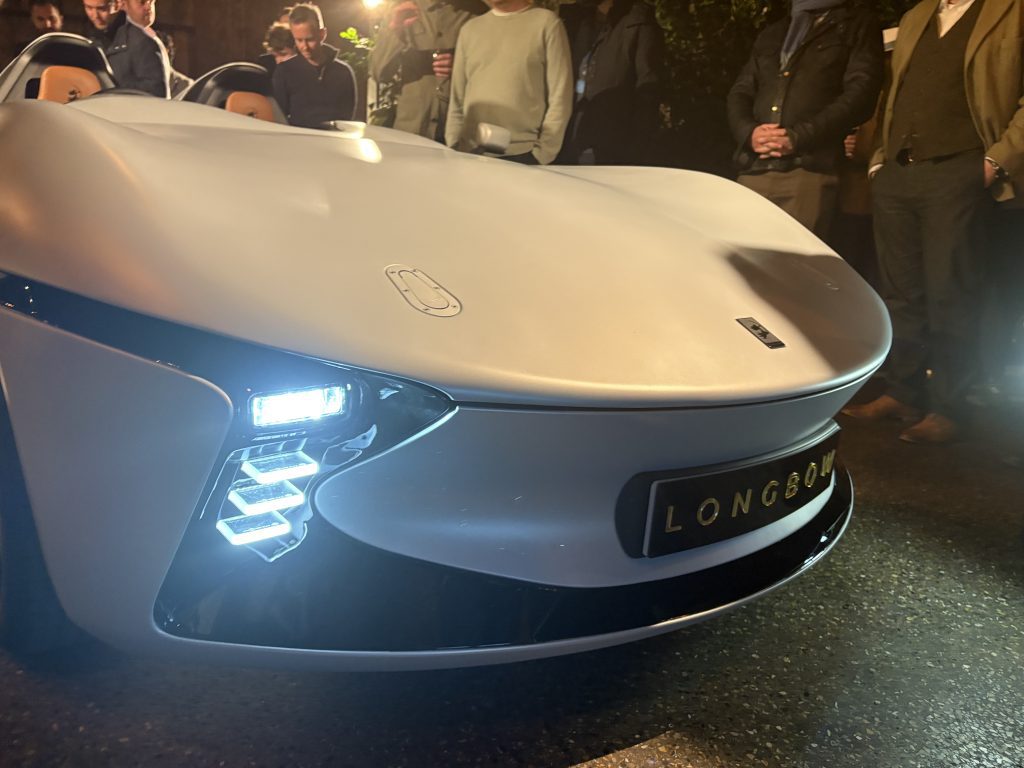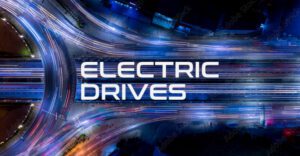- Ultra lightweight new EV, the Longbow Speedster launched in London.
- Kerb weight targets land dramatically below the EV norm under 1,100kg.
- Longbow aims to redefine the sports car category as sustainably led EV form.
From ideation to creation in six months
From ideation to creation in a super short six months, the Longbow sports car EV project has gone from a spark between two industry veterans to a real, living machine. Co-founders, Mark Tapscott and Daniel Davey, have long been known for their ability to deliver large-scale electrification programmes for Tesla, Lucid Motors, and other global players, tut the Longbow Speedster marks a different kind of achievement: a passion project with sector-shifting ambition.
Where many sports car manufacturers talk about transitioning to electrification, Longbow is doing it. And doing it at a velocity rarely seen in automotive development.

A New Contender — And a New Philosophy with Longbow Electric Sports Cars
The Longbow Speedster is more than another EV debut; it’s a visual and engineering statement. Ultra-lightweight, sculptural, and unapologetically focused on driver engagement, the Speedster rejects the notion that electric performance cars must be heavy or detached. Every line, surface, and component has been designed around a single principle: electrification should sharpen a sports car, not soften it and also accelerate sustainability into the sector.
Unveiled at an exclusive event in London, the Speedster stunned its first audience. Not just because it’s beautiful — though it undeniably is — but because of what it represents: the rebirth of the British sports car as a low-carbon icon.
Technical Deep Dive: Engineering the Longbow Speedster
The Speedster incorporates a level of engineering sophistication that belies its six-month gestation. Longbow achieved this by leveraging a blend of motorsport methodology, UK EV expertise, and ultra-tight vertical integration.
Ultra-Light Architecture
At its core is a carbon-composite monocoque, reinforced with an aluminium rear subframe and 3D-printed titanium mounting nodes. This mixed-material strategy keeps manufacturing agile while maintaining extreme torsional rigidity — essential for open-top sports cars.
Kerb weight targets land dramatically below the EV norm: under 1,100kg, depending on final battery spec — a figure more typical of lightweight combustion sports cars than modern electrics. This low weight unlocks everything else: agility, range, efficiency, and connection to the road.
Performance-Focused Electric Drive
The prototype Speedster uses a single high-output rear motor, chosen for purity rather than the headline-grabbing power of dual- or tri-motor setups. But it’s no slouch:
- Power: approx. 300–350kW (400–470bhp)
- Torque: instant, delivered through a compact differential
- 0–60mph: target sub-3.5s
- Top speed: limited to maintain motor efficiency and thermal stability
More importantly, the motor is positioned to achieve near-ideal weight distribution, giving the Speedster the balance and responsiveness of a classic British roadster — only electrified.

A Motorsport-Grade Battery Strategy
Rather than brute-force energy capacity, Longbow takes a motorsport-inspired, efficiency-first approach.
- Battery: a lightweight pack in the 45–55kWh range
- Chemistry: high-power lithium-ion designed for repeatable performance
- Cooling: a motorsport-style cold plate system with rapid heat extraction
- Charging: up to 150kW DC, with a bespoke thermal map to sustain peak charge for longer
A smaller pack means less mass, better handling, and more engagement — and with the car’s aerodynamic efficiency and low weight, real-world ranges of 180–220 miles are expected, more than enough for spirited road use.
Driver-Centric Dynamics of the Longbow
Suspension geometry is pure sports car:
- Double wishbones at all four corners
- Inboard pushrod dampers (on select prototype variants)
- Electronically controlled adaptive damping
- Ultra-low seating position enabled by a slim battery deck
Steering is hydraulic-assisted for feel — a rare choice in modern EVs, and one that immediately set the prototype apart during initial shakedowns.
With the battery centred and low, rotational inertia is dramatically reduced compared with typical EV platforms. The Speedster pivots like a lightweight ICE roadster, but accelerates like something entirely new.
Aero by Necessity, Not Over-design
The Speedster’s clean surfaces aren’t an aesthetic accident. With no roofline, aero sealing is impossible, so Longbow focused on managing laminar flow and reducing turbulence around the cockpit.
Key features include:
- A sculpted aero channel that guides air over the cabin
- A flat underfloor with a venturi-style diffuser
- Carefully tuned front dive planes that preserve steering feel at speed
The result: stable high-speed behaviour without resorting to oversized wings or aggressive bodywork.

Concept to Car — Longbow Delivers in “UK Time”
In an industry increasingly defined by China’s lightning-fast development cycles, Team Longbow has shown that the UK can move just as quickly — and just as boldly. Not ‘China Time’, but to a new schedule of ‘UK Time’.
To hit the six-month mark, Tapscott and Davey relied on their deep global experience, their intuitive understanding of EV powertrain integration, and a hand-picked team of engineers, designers, and fabricators. More importantly, they tapped into the UK’s world-leading ecosystem of motorsport suppliers.
Proof of UK EV Excellence
As leading EV commentator, Roger Atkins, noted at the launch, “The skills for excellence in EV design and engineering are right here, in the UK.”
Longbow’s achievement proves that point more powerfully than any policy document could. It shows that the UK’s century-old tradition of performance engineering can not only survive the electric transition, but thrive within it.
A Compelling Vision People Want to Follow
If you want the world to embrace the EV future, you must build something that people desire — viscerally, emotionally, instinctively. A machine that turns heads, turns perceptions, and makes even the petrol-hardest enthusiast pause.
That is what the Longbow Speedster achieves. It is not a compromise. It is not an exercise in compliance. It is a car so utterly, utterly compelling that desire does the work of persuasion.
In six months, Tapscott, Davey, and their exceptional team haven’t just built a new EV. They’ve built momentum. They’ve built a symbol. They’ve built a sports car that speaks the universal language of beauty and speed — powered by the clean energy that defines the next era of mobility.
And they’ve done it the British way. Propel a Longbow, here: https://longbowmotors.com/



